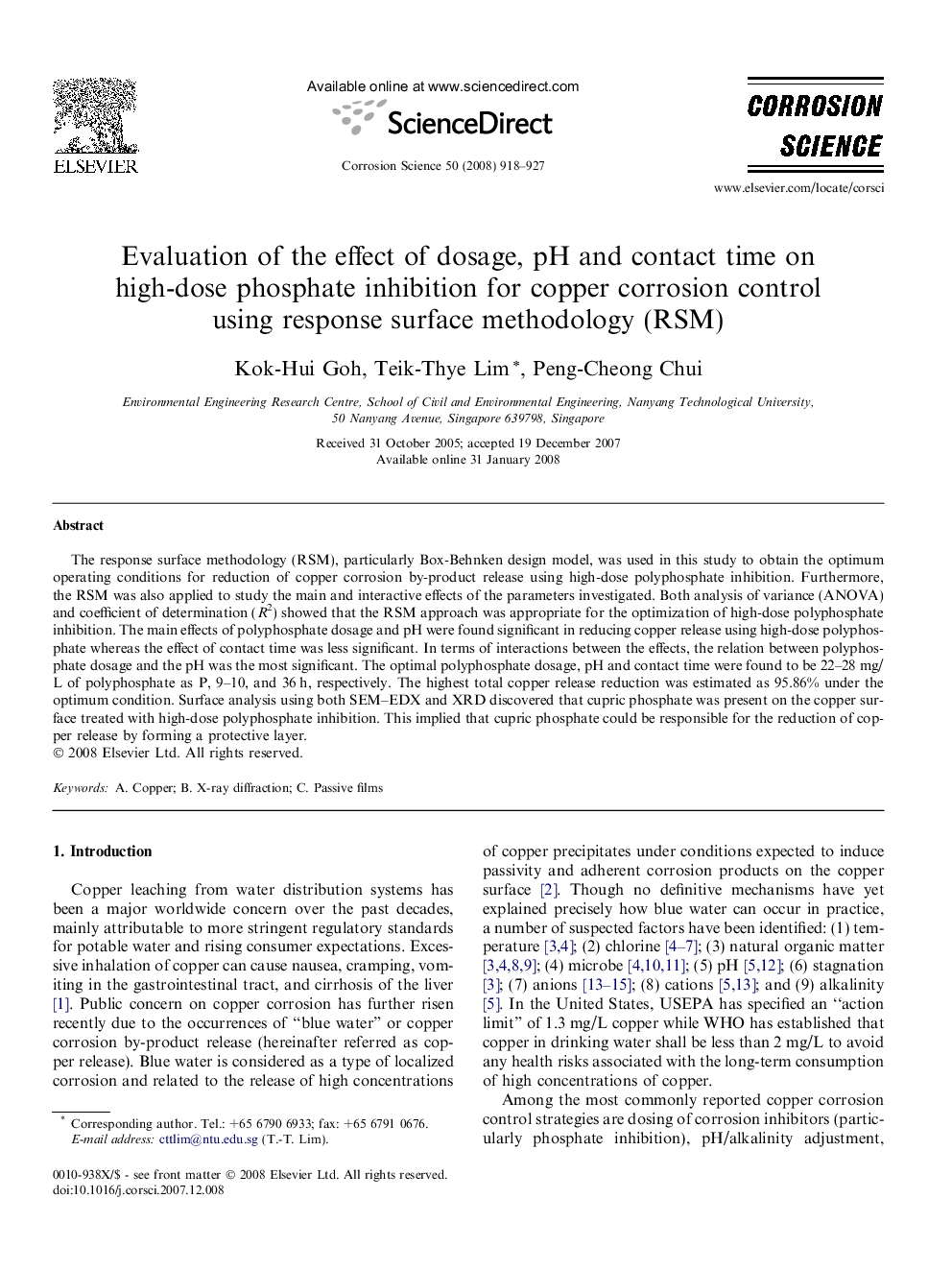| کد مقاله | کد نشریه | سال انتشار | مقاله انگلیسی | نسخه تمام متن |
|---|---|---|---|---|
| 1471915 | 990365 | 2008 | 10 صفحه PDF | دانلود رایگان |

The response surface methodology (RSM), particularly Box-Behnken design model, was used in this study to obtain the optimum operating conditions for reduction of copper corrosion by-product release using high-dose polyphosphate inhibition. Furthermore, the RSM was also applied to study the main and interactive effects of the parameters investigated. Both analysis of variance (ANOVA) and coefficient of determination (R2) showed that the RSM approach was appropriate for the optimization of high-dose polyphosphate inhibition. The main effects of polyphosphate dosage and pH were found significant in reducing copper release using high-dose polyphosphate whereas the effect of contact time was less significant. In terms of interactions between the effects, the relation between polyphosphate dosage and the pH was the most significant. The optimal polyphosphate dosage, pH and contact time were found to be 22–28 mg/L of polyphosphate as P, 9–10, and 36 h, respectively. The highest total copper release reduction was estimated as 95.86% under the optimum condition. Surface analysis using both SEM–EDX and XRD discovered that cupric phosphate was present on the copper surface treated with high-dose polyphosphate inhibition. This implied that cupric phosphate could be responsible for the reduction of copper release by forming a protective layer.
Journal: Corrosion Science - Volume 50, Issue 4, April 2008, Pages 918–927